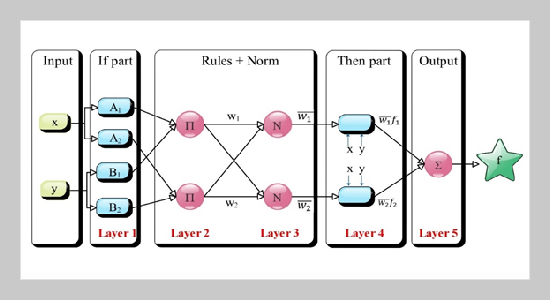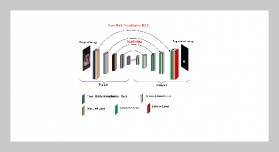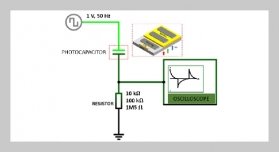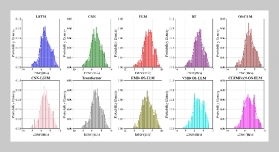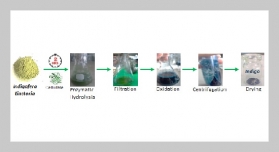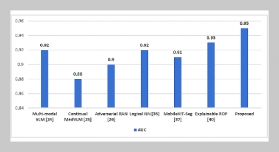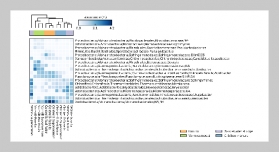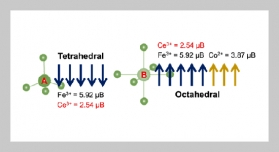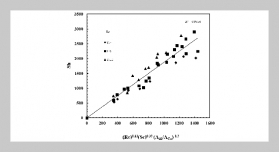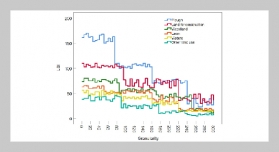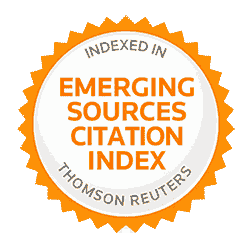- [1] S.AdhikariandS.Bhattacharya,(2008)“DynamicIn stability of Pile-Supported Structures in Liquefiable Soils duringEarthquakes"ShockandVibration15:665–685. DOI: https: //doi.org/10.1155/2008/149031.
- [2] Q. Yang, S. Cheng, and B. Zhou,(2020)“Monitoring study on vertical bearing capacity of pile foundation in soft rock of lhasa human settlements " Journal of Intelligent &Fuzzy Systems 38:7639–7650. DOI: https: //doi.org/10.3233/JIFS-179834.
- [3] S. A .Hoor and M. Esmaeili-Falak,(2024)“Innovative Approaches for Mitigating Soil Liquefaction: A State-of the-Art Review of Techniques and Bibliometric Analysis" IndianGeotechnicalJournal:1–28.DOI: https: //doi.org/10.1007/s40098-024-01120-3.
- [4] P. O. V. Impe, W. F. V. Impe, and L. Seminck, (2013) “Discussion of an instrumented screw pile load test and connected pile group load settlement behavior" Journal of Geo-Engineering Sciences 1: 13–36. DOI: https: //doi.org/10.3233/JGS-130011.
- [5] B. B. Sheil, B. A. McCabe, C. E. Hunt, and J. M. Pes tana, (2015) “A practical approach for the consideration of single pile and pile group installation effects in clay: numerical modelling" Journal of Geo-Engineering Sciences 2: 119–142. DOI: https: //doi.org/10.3233/JGS140027.
- [6] G. Moradi, E. Hassankhani, and A. M. Halabian, (2022) “Experimental and numerical analyses of buried box culverts in trenches using geofoam" Proceedings of the Institution of Civil Engineers-Geotechnical Engineering 175: 311–322. DOI: https: //doi.org/10.1680/jgeen.19.00288.
- [7] B. Fellenius. Basics of foundation design. Lulu. com, 2017.
- [8] A.Taghavi, A. Patil,and M. Davidson,(2017)“Design oriented seismic soil-pile-superstructure interaction analysis using a dynamicpy method" Bridge Structures 13: 57–67. DOI: https: //doi.org/10.3233/BRS-170113.
- [9] M. Esmaeili-Falak and R. S. Benemaran, (2024) “Ap plication of optimization-based regression analysis for evaluation of frost durability of recycled aggregate concrete" Structural Concrete 25: 716–737. DOI: https: //doi.org/10.1002/suco.202300566.
- [10] J. E. Bowles and Y. Guo. Foundation analysis and design. 5. McGraw-hill New York, 1996.
- [11] H.A.deAzeredo, (1977) “O edifício até sua cobertura" Edgard Blucher Ltda, São Paulo:
- [12] B. M. Das and K. Sobhan, (1990) “Principles of geotechnical engineering": 1–156.
- [13] B. M.DasandN. Sivakugan. Principles of foundation engineering. Cengage learning, 2018.
- [14] A.B. Vesic, (1963) “Bearing capacity of deep foundations in sand" Highway research record:
- [15] F. Saberi-Movahed, M. Najafzadeh, and A. Mehrpooya, (2020) “Receiving more accurate predictions for longitudinal dispersion coefficients in water pipelines: training group method of data handling using extreme learning machine conceptions" Water Resources Management 34: 529–561. DOI: https: //doi.org/10.1007/s11269-019-02463-w.
- [16] G. Zhao, H. Wang, and Z. Li, (2023) “Capillary water absorption values estimation of building stones by ensembled and hybrid SVR models" Journal of Intelligent & Fuzzy Systems 44: 1043–1055. DOI: https: //doi.org/10.3233/JIFS-221207.
- [17] G. Yang, T. Li, C. Ma, L. Meng, H. Zhang, and J. Ma, (2022) “Intelligent rating method of tunnel surrounding rock based on one-dimensional convolutional neural network" Journal of Intelligent & Fuzzy Systems 42: 2451–2469. DOI: https: //doi.org/10.3233/JIFS211718.
- [18] K. Zhang, Y. Zhang, and B. Razzaghzadeh, (2024) “Application of the optimal fuzzy-based system on bearing capacity of concrete pile" Steel and Composite Structures 51: 25–41. DOI: https: //doi.org/10.12989/scs.2024.51.1.025.
- [19] Y. Dawei, Z. Bing, G. Bingbing, G. Xibo, and B. Razza ghzadeh, (2023) “Predicting the CPT-based pile set-up parameters using HHO-RF and PSO-RF hybrid models" Structural Engineering and Mechanics, An Int’l Journal 86: 673–686. DOI: 10.12989/sem.2023.86.5.673.
- [20] R. Liang and B. Bayrami, (2023) “Estimation of frost durability of recycled aggregate concrete by hybridized Random Forests algorithms" Steel and Composite Structures 49: 91–107. DOI: https: //doi.org/10.12989/scs.2023.49.1.091.
- [21] H. Kou, J. Quan, S. Guo, and E. Hassankhani, (2024) “Light and normal weight concretes shear strength estimation using tree-based tunned frameworks" Construction and Building Materials 452: 138955. DOI: https: //doi.org/10.1016/j.conbuildmat.2024.138955.
- [22] X. Sun, X. Dong, W. Teng, L. Wang, and E. Has sankhani, (2024) “Creation of regression analysis for estimation of carbon fiber reinforced polymer-steel bond strength" Steel and Composite Structures 51: 509 527. DOI: https: //doi.org/10.12989/scs.2024.51.5.509.
- [23] M. A. Shahin, M. B. Jaksa, and H. R. Maier, (2001) “Artificial neural network applications in geotechnical engineering" Australian geomechanics 36: 49–62.
- [24] F. P. Nejad and M. B. Jaksa, (2017) “Load-settlement behavior modeling of single piles using artificial neural networks and CPT data" Computers and Geotechnics 89: 9–21. DOI: https: //doi.org/10.1016/j.compgeo.2017.04.003.
- [25] R. Jiang, (2022) “Using the integrated neural network of radial basis function (RBF) via optimization algorithms to estimate pile settlement range" Journal of Intelligent & Fuzzy Systems 43: 6683–6695. DOI: https: //doi.org/10.3233/JIFS-220741.
- [26] M. Zhang, Q. Du, J. Yang, and S. Liu, (2022) “Modeling the pile settlement using the Integrated Radial Basis Function (RBF) neural network by Novel Optimization algorithms: HRBF-AOA and HRBF-BBO" Journal of Intelligent & Fuzzy Systems 43: 7009–7022. DOI: https: //doi.org/10.3233/JIFS-221021.
- [27] T. Xia, W. Wang, and X. N. Wang, (2010) “Artificial neural network model for time-dependent vertical bearing capacity of preformed concrete pile" Applied mechanics and materials 29: 226–230. DOI: https: //doi.org/10.4028/www.scientific.net/AMM.29-32.226.
- [28] B. T. Kim, Y. S. Kim, and S. H. Lee, (2001) “Prediction of lateral behavior of single and group piles using artificial neural networks" KSCE Journal of Civil Engineering 5: 185–198. DOI: https: //doi.org/10.1007/BF02829074.
- [29] I. Alkroosh and H. Nikraz, (2014) “Predicting pile dynamic capacity via application of an evolutionary algorithm" Soils and Foundations 54: 233–242. DOI: https: //doi.org/10.1016/j.sandf.2014.02.013.
- [30] W. Zhang and A. T. C. Goh, (2016) “Multivariate adaptive regression splines and neural network models for prediction of pile drivability" Geoscience Frontiers 7: 45 52. DOI: https: //doi.org/10.1016/j.gsf.2014.10.003.
- [31] A. T. C. Goh, (1996) “Pile driving records reanalyzed using neural networks" Journal of Geotechnical Engineering 122: 492–495. DOI: https://doi.org/10.1061/(ASCE)0733-9410(1996)122:6(492).
- [32] H. Ardalan, A. Eslami, and N. Nariman-Zadeh, (2009) “Piles shaft capacity from CPT and CPTu data by polynomial neural networks and genetic algorithms" Computers and Geotechnics 36: 616–625. DOI: https: //doi.org/10.1016/j.compgeo.2008.09.003.
- [33] I. S. Alkroosh, M. Bahadori, H. Nikraz, and A. Ba hadori, (2015) “Regressive approach for predicting bearing capacity of bored piles from cone penetration test data" Journal of Rock Mechanics and Geotechnical Engineering 7: 584–592. DOI: https://doi.org/10.1016/j.jrmge.2015.06.011.
- [34] F. Milad, T. Kamal, H. Nader, andO.E.Erman,(2015) “New method for predicting the ultimate bearing capacity of driven piles by using Flap number" KSCE Journal of Civil Engineering 19: 611–620. DOI: https: //doi.org/10.1007/s12205-013-0315-z.
- [35] S. Suman, S. K. Das, and R. Mohanty, (2016) “Prediction of friction capacity of driven piles in clay using artificial intelligence techniques" International Journal of Geotechnical Engineering 10: 469–475. DOI: https: //doi.org/10.1080/19386362.2016.1169009.
- [36] H. Maizir. “Evaluation of shaft bearing capacity of single driven pile using neural network”. In: Proceedings of the international multiconference of engineers and computer scientists. 1. 2017, 15–17.
- [37] H. Moayedi and S. Hayati, (2019) “Artificial intelligence design charts for predicting friction capacity of driven pile in clay" Neural Computing and Applications 31: 7429–7445. DOI: https://doi.org/10.1007/ s00521-018-3555-5.
- [38] A. S. Ibrahim, A. A. Musa, A. Y. Abdulfatah, and A. Idris, (2023) “Developing soft-computing regression model for predicting soil bearing capacity using soil index properties" Modeling Earth Systems and Environment 9: 1223–1232. DOI: https: //doi.org/10.1007/s40808-022-01541-0.
- [39] M. A. Mu’azu, (2023) “Hybridized artificial neural network with metaheuristic algorithms for bearing capacity prediction" Ain Shams Engineering Journal 14: 101980. DOI: https://doi.org/10.1016/j.asej.2022.101980.
- [40] M. Panahi, A. Gayen, H. R. Pourghasemi, F. Rezaie, and S. Lee, (2020) “Spatial prediction of landslide susceptibility using hybrid support vector regression (SVR) and the adaptive neuro-fuzzy inference system (ANFIS) with various metaheuristic algorithms" Science of the Total Environment 741: 139937. DOI: https://doi.org/10.1016/j.scitotenv.2020.139937.
- [41] M. Y. Anshori, D. Rahmalia, T. Herlambang, and D. F. Karya. “Optimizing Adaptive Neuro Fuzzy Inference System (ANFIS) parameters using Cuckoo Search (Case study of world crude oil price estimation)”. In: Journal of Physics: Conference Series. 1836. IOP Publishing, 2021, 012041. DOI: 10.1088/1742-6596/1836/1/012041.
- [42] J. Piri and M. R. R. Kahkha, (2017) “Prediction of water level fluctuations of Chahnimeh reservoirs in Zabol using ANN, ANFIS and cuckoo optimization algorithm" Iranian Journal of Health, Safety and Environment 4: 706–715.
- [43] J. Piri, K. Mohammadi, S. Shamshirb and, and S. Akib, (2016) “Assessing the suitability of hybridizing the Cuckoo optimization algorithm with ANN and ANFIS techniques to predict daily evaporation" Environmental Earth Sciences 75: 1–13. DOI: https: //doi.org/10.1007/s12665-015-5058-3.
- [44] H. A. R. d. Castro Filho, (2013) “Construction companies’ perception of sustainability rating programs for housing construction projects: a case study of the Caixa Casa Azul Seal":
- [45] M. S. Jayaweera, (2011) “Capacity estimation of piles using dynamic methods": DOI: http: //dl.lib.mrt.ac.lk/handle/123/1868.
- [46] B. de Oliveira Lobo, (2005) “Método de previsão de capacidade de carga de estacas: aplicação dos conceitos de energia do ensaio SPT":
- [47] , (2020) “Standard Test Methods for Deep Foundations Under Static Axial Compressive Load" ASTM Interna tional 04.08: 1–15. DOI: 10.1520/D1143_D1143M 07R13E01.
- [48] A. International, (2017) “Standard Test Method for High-Strain Dynamic Testing of Deep Foundations" 04.08: 1–10. DOI: 10.1520/D4945-17.
- [49] R. S. Benemaran, (2023) “Application of extreme gradient boosting method for evaluating the properties of episodic failure of borehole breakout" Geoenergy Science and Engineering 226: 211837. DOI: https: //doi.org/10.1016/j.geoen.2023.211837.
- [50] M. A. Hir, M. Zaheri, and N. Rahimzadeh, (2023) “Prediction of rural travel demand by spatial regression and artificial neural network methods (Tabriz County)" Journal of transportation research (Tehran) 20: 367 386. DOI: 10.22034/tri.2022.312204.2970.
- [51] B. M. Yaychi and M. Esmaeili-Falak, (2024) “Estimating axial bearing capacity of driven piles using tuned random forest frameworks" Geotechnical and Geological Engineering 42: 7813–7834. DOI: https: //doi.org/10.1007/s10706-024-02952-9.
- [52] D. E. Farrar and R. R. Glauber, (1967) “Multicollinearity in regression analysis: the problem revisited" The Re view of Economic and Statistics: 92–107. DOI: https: //doi.org/10.2307/1937887.
- [53] R. Rajabioun, (2011) “Cuckoo optimization algorithm" Applied soft computing 11: 5508–5518. DOI: https: //doi.org/10.1016/j.asoc.2011.05.008.
- [54] S. Mirjalili, S. M. Mirjalili, and A. Lewis, (2014) “Grey wolf optimizer" Advances in engineering software 69: 46–61. DOI: https: //doi.org/10.1016/j.advengsoft.2013.12.007.
- [55] L. Wang, Q. Cao, Z. Zhang, S. Mirjalili, and W. Zhao, (2022) “Artificial rabbits optimization: A new bio-inspired meta-heuristic algorithm for solving engineering optimization problems" Engineering Applications of Artificial Intelligence 114: 105082. DOI: https: //doi.org/10.1016/j.engappai.2022.105082.
- [56] J. S. Tang, (1993) “ANFIS: Adaptive network based fuzzy inference systems" IEEE Trans. Syst. Cybern 23: 515 520. DOI: 10.1109/21.256541.
- [57] M. Esmaeili-Falak, H. Katebi, M. Vadiati, and J. Adamowski, (2019) “Predicting triaxial compressive strength and Young’s modulus of frozen sand using artificial intelligence methods" Journal of Cold Regions Engineering 33: 04019007. DOI: https: //doi.org/10.1061/(ASCE)CR.1943-5495.0000188.


